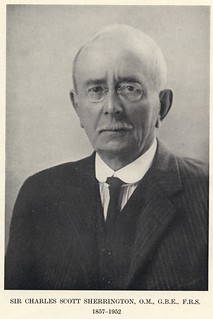- Creation
-
Creator (Definite): Sir Charles Scott SherringtonDate: 1947
- Current Holder(s)
-
- No links match your filters. Clear Filters
-
Quoted by
 T. Quick, 'Disciplining Physiological Psychology: Cinematographs as Epistemic Devices, 1897-1922', Science in Context 30 (4), pp. 423-474.
T. Quick, 'Disciplining Physiological Psychology: Cinematographs as Epistemic Devices, 1897-1922', Science in Context 30 (4), pp. 423-474.
Description:'By the 1920s, the questions that motivated physiological psychological studies of illusion had mutated. Within physiology, the points at issue decreasingly referred to physiological conditions of sensation, and instead concentrated ever more on the relation between general functional models and their specific structural conditions. In a later preface to Integrative Action, Sherrington would define physiology as the study of a 'unified machine.' [note: 'C.S. Sherrington , 'Foreword to the 1947 edition', in Sherrington, The Integrative Action, pp. xiii-xxiv, on p. xix.'] Such phraseology identified two ends of a spectrum that ran from his own attempt to elaborate a single explanatory schema encompassing all studies of nervous phenomena on the one hand, to chemistry- and physics-derived claims relating to the make-up and origins of cells on the other. That his title of the monograph referred not to an historically psychological category such as will or volition but rather to a mathematics-recalling 'integration' as the unifying tendency of nervous activity points to a more general trend within physiology to cordon off psychological questions from physiological claims. [note: 'Smith, 'Physiology and Psychology', p. 228. On Sherrington's subsequent adherence to an 'integrative' conception of social order see Smith, 'Representations of Mind', pp. 525-528.']'







